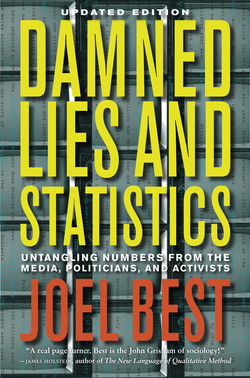Читать книгу Damned Lies and Statistics - Joel Best - Страница 9
На сайте Литреса книга снята с продажи.
ОглавлениеPREFACE TO THE UPDATED EDITION
Darrell Huff’s little book, How to Lie with Statistics, made a bigger impression on me than anything else I read during my first year in college.1 It wasn’t even assigned reading; the TA in my statistics lab mentioned it in passing, the title struck me as amusing, and I borrowed the book from the campus library. It was a great read: by cataloging basic forms of statistical malpractice, Huff gave me a set of critical tools I could apply when reading news stories.
As the years went by, it became clear to me that the errors Huff had exposed remained alive and well. Sometime in the early 1990s, I reread How to Lie with Statistics. This time, I was less impressed. While Huff still offered a terrific introduction to the topic, I realized that he’d barely scratched the surface. I started thinking about writing a book of my own, one that provided a more comprehensive, more sociological approach. Damned Lies and Statistics was the result.
Sociology professors get used to writing for other sociologists. The chief pleasure of having written this book has been discovering the broad range of people who have read it and told me what they thought—professors and students, of course, but all sorts of folks outside academia—journalists, activists, math teachers, judges, doctors, even a mom who’d assigned it to her homeschooled child. Lots of people have found the topic interesting, and I continue to get email messages drawing my attention to particularly dubious numbers.
And there is no shortage of questionable numbers. This version of the book contains a new afterword that tries to explain why, even if we all agree that people ought to think more critically about the figures that inform our public debates, we seem unable to drive bad statistics out of the marketplace of ideas.
NOTES
1. Darrell Huff, How to Lie with Statistics (New York: Norton, 1954). For a symposium on Huff’s book, see the special section “How to Lie with Statistics Turns Fifty,” in Statistical Science 20 (2005): 205–60.
